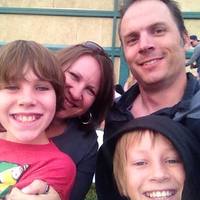Passover is one of the most widely celebrated Jewish holidays around the world. It commemorates the biblical story of Exodus, when Hebrew people were slaves to the Pharaoh and Moses saved them from bondage in Egypt.
The holiday is also called "pesach" (pay-sak) in Hebrew and the English version or translation is Passover. To most Jews, it is a celebration of freedom.
One of the biggest traditions of the holiday is that Jews do not eat leavened bread during the holiday. They eat an unleavened bread called Matzo or Matzah. It is a flat cracker-like bread and Jews eat it for the entire eight days of Passover.
Matzah is the symbol of the Exodus, a central component of the Passover rituals, and the heart of the "Festival of Matzot" (as Passover is also called).
To get ready for Passover, many Jews get rid of leavened bread, also called Chametz, by selling it to non-Jews and burning left over Chametz, based on the commandment in Exodus 13:3–7:
“No leaven shall be eaten... For seven days you shall eat unleavened bread... and no leaven shall be seen of yours [in your possession].”
Jews clean and inspect their homes well before Passover, and gradually eliminate Chametz from every room and crevice. This intensive cleaning takes place in Jewish homes throughout the world.
So just what is leavened bread? Any food that's made of grain and waters and has been allowed to ferment and "rise." Bread, cereal, cake, cookies, pizza, pasta, and beer are blatant examples of Chametz, but any food that contains grain or grain derivatives can be, and often is, Chametz or leavened bread.
Practically speaking, any processed food that is not certified "Kosher for Passover" may potentially include Chametz ingredients, so Jews get rid of it for the eight days of Passover.
For the first two nights of Passover, Jews invite their family and friends to a BIG dinner called a Seder. They read a book called the Hagaddah at the Seder which includes stories, songs, and discussions on the Exodus from Egypt. They eat specialized foods that are used as symbolism in the story of the Exodus.
The symbolic food is placed on what is called a Seder Plate, so it is always visible during the entire Seder. As the Seder happens, participants sample different symbolic food and each item on the Seder Plate is pointed out and its significance is discussed.
- Horseradish and Romaine Lettuce. These bitter herbs represent the bitterness of life as a Jewish slave in Egypt.
- Parsley. Parsley (or sometimes boiled potato) is dipped in salt water and eaten as a symbol of the tears shed by Jewish slaves.
- Charoset. A salad of ground apples, nuts, and red wine, charoset stands for the bricks and mortar Jewish slaves used to build the pyramids of the Egyptian kings.
- Roasted Bone. This bone (frequently the bone of a lamb or chicken) represents the sacred burnt offering at the ancient Temple of Jerusalem.
- Egg. A symbol of mourning, the hard-boiled egg represents the sorrow of the Temple's destruction.
If you aren't Jewish, take this opportunity to learn and celebrate another culture with one of these delicious recipes from our archives:


